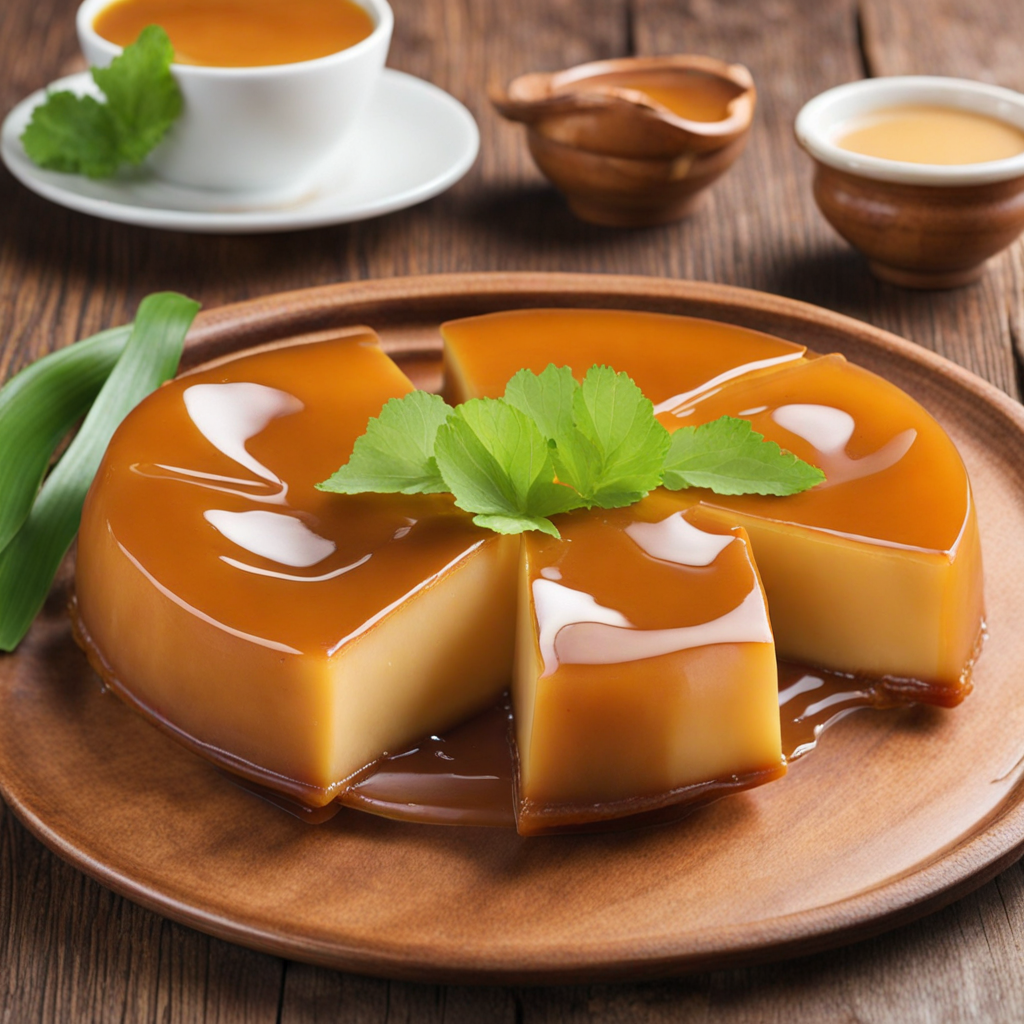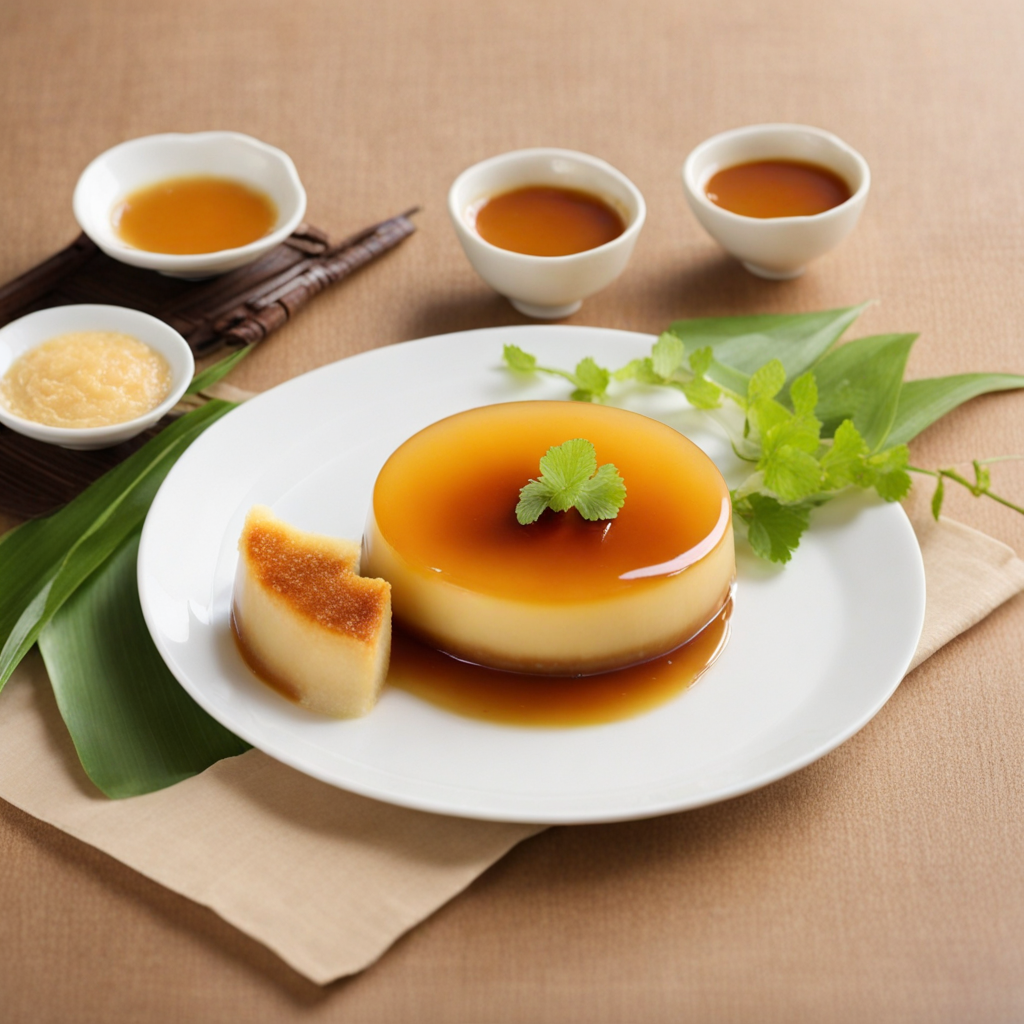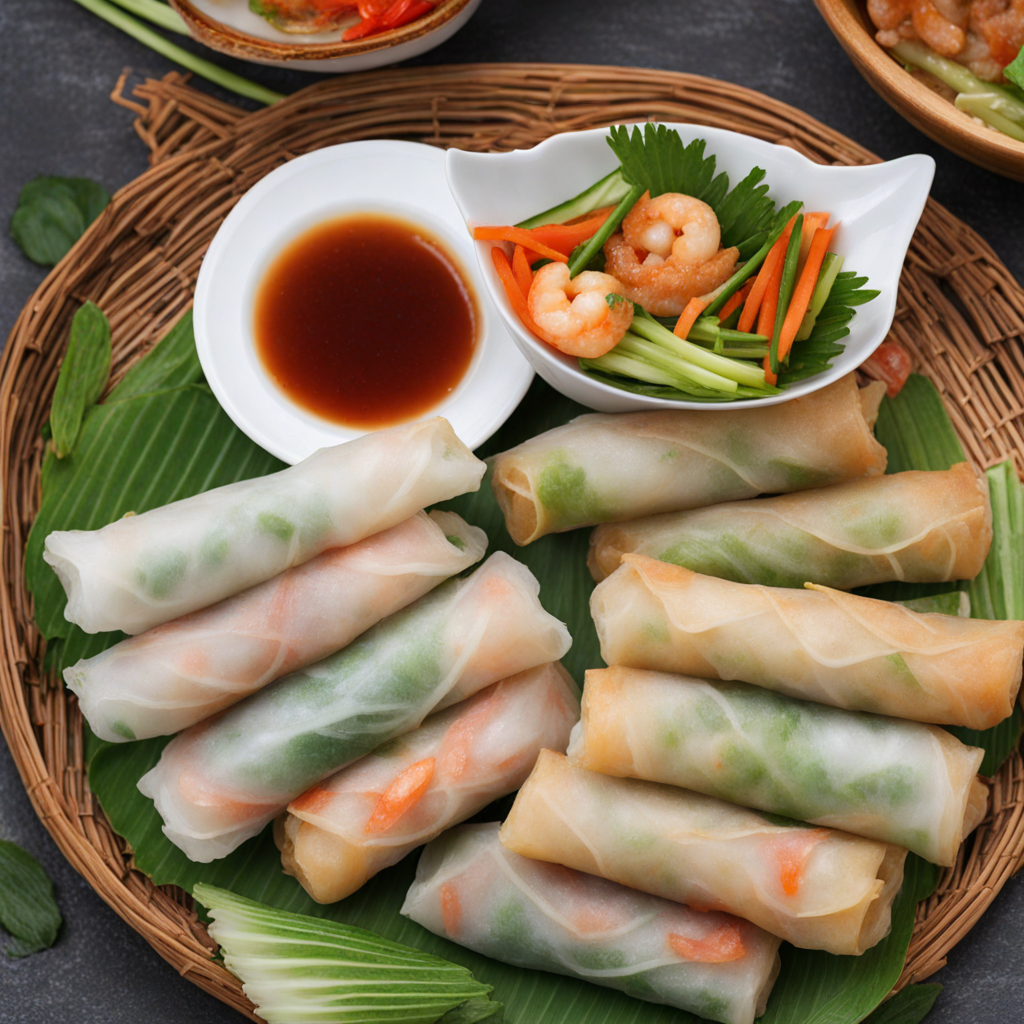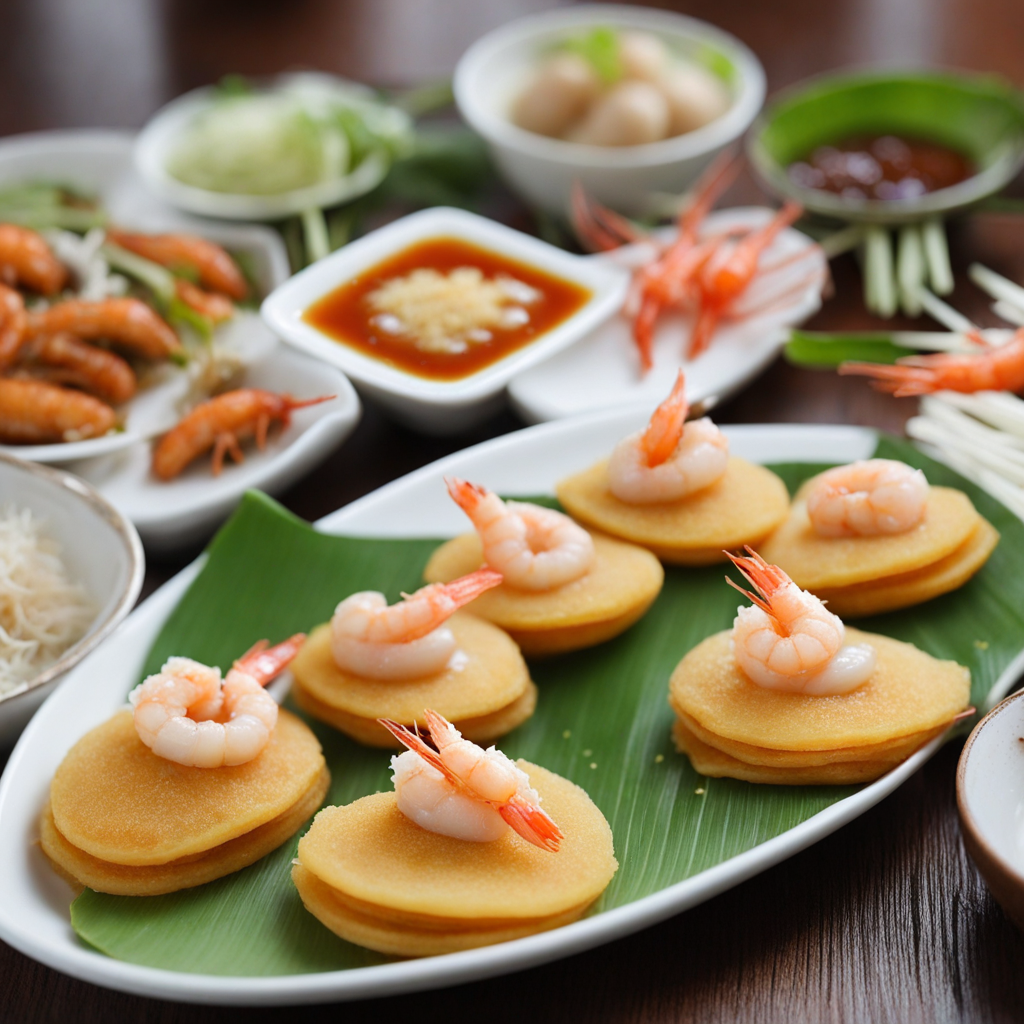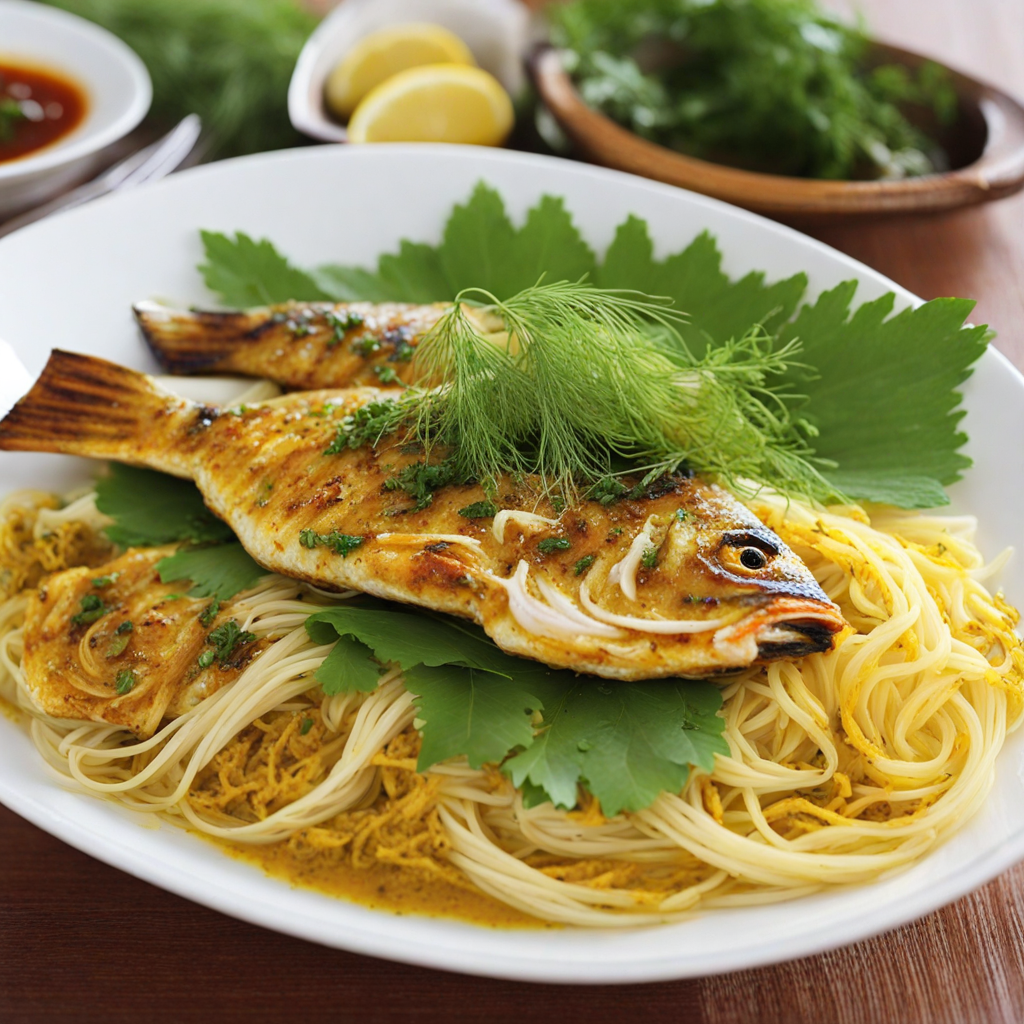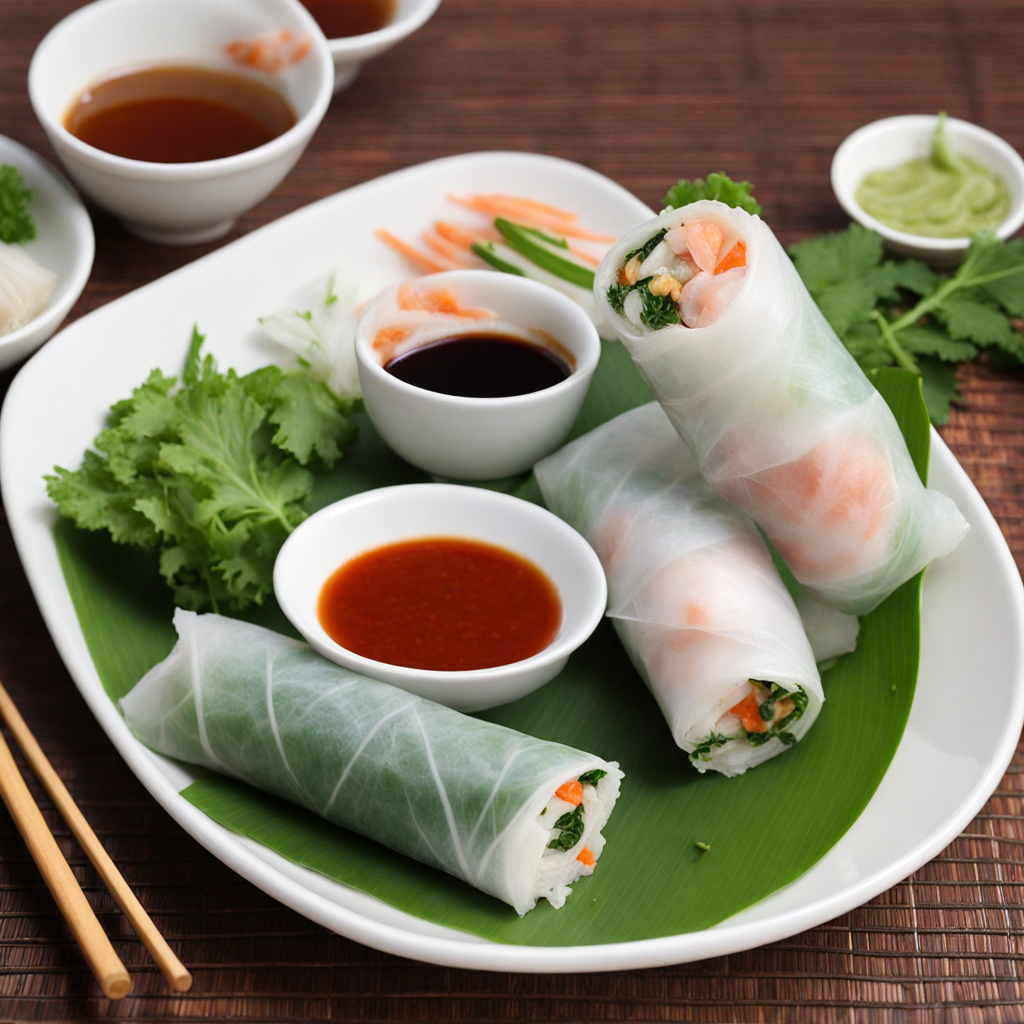Banh Flan
Banh Flan, also known as Vietnamese caramel flan, is a delightful dessert that showcases the country's rich culinary heritage. This custard-like treat is made from simple ingredients such as eggs, milk, and sugar, blended together to create a silky-smooth texture that melts in your mouth. The flan is gently steamed to achieve its delicate consistency, and the result is a creamy base that is both satisfying and indulgent. What sets Banh Flan apart from other flans is its unique infusion of flavors, often enhanced by the addition of coconut milk, which adds a subtle richness and tropical essence to the dish. The dessert is typically crowned with a luscious layer of caramel, created by melting sugar until it turns golden and bubbly. This caramel not only provides a beautiful glaze but also offers a sweet and slightly bitter contrast to the creamy flan beneath. When you take your first bite, you'll experience a delightful balance of textures: the smooth custard gives way to the sticky, sweet caramel, creating a harmonious blend that is truly addictive. Served chilled, Banh Flan is a refreshing treat that can be enjoyed at any time of the day, making it a popular choice among locals and travelers alike. Banh Flan is often presented in small, individual cups or molds, making it easy to share or savor on your own. It is a staple at Vietnamese family gatherings, celebrations, and even street food stalls, where you can find vendors offering their own unique twists on this beloved dessert. Whether enjoyed as a sweet ending to a meal or a midday snack, Banh Flan is a must-try for anyone looking to explore the vibrant flavors of Vietnamese cuisine. Each bite is an invitation to experience the warmth and richness of Vietnam's culinary culture, leaving you craving more.
How It Became This Dish
The Sweet Journey of Bánh Flan: A Vietnamese Delight Bánh flan, a silky-smooth custard dessert, has woven itself into the fabric of Vietnamese culinary culture, delighting taste buds with its delicate flavors and creamy texture. This delectable dish, often enjoyed as a sweet ending to a meal or a refreshing snack, encapsulates a rich tapestry of influences, history, and cultural significance that traces back to both local traditions and foreign adaptations. Origins: A Culinary Confluence The origins of bánh flan can be traced back to the early 20th century, influenced predominantly by French colonial rule in Vietnam. The French brought with them a plethora of culinary techniques and ingredients, including the concept of custard desserts, which were a staple in French patisserie. The classic French crème caramel, a dessert made from eggs, milk, and sugar, served as the primary inspiration for bánh flan. However, the Vietnamese adaptation of this French dessert was not merely a replication. Instead, it evolved into a distinct dish that incorporated local flavors and ingredients. The use of coconut milk, a staple in Vietnamese cuisine, gave bánh flan its unique, tropical twist. This local ingredient not only enhanced the flavor but also contributed to the dessert's signature creamy texture. As a result, bánh flan became a harmonious fusion of French culinary art and Vietnamese agricultural bounty. Cultural Significance: A Symbol of Celebration In Vietnam, food is deeply intertwined with cultural practices and traditions. Bánh flan’s significance transcends its status as a dessert; it is emblematic of celebration, hospitality, and community. Often served during family gatherings, festive occasions, and special celebrations, bánh flan is a dish that brings people together. Its preparation is a communal activity, where family members may gather to make the custard, pour it into molds, and prepare the caramel sauce. The dessert is also a popular offering during Tet, the Vietnamese Lunar New Year, symbolizing prosperity and sweetness in the year ahead. Its golden hue, reminiscent of wealth and good fortune, makes it a fitting choice for auspicious occasions. Beyond celebrations, bánh flan has found its place in everyday life, being sold by street vendors and enjoyed at cafes, making it a common sight and taste across the country. Development Over Time: From Street Stalls to Modern Cafés As Vietnam underwent significant changes throughout the 20th century—including the impact of war, globalization, and economic reforms—the popularity of bánh flan continued to grow. The post-war era saw an increase in culinary experimentation, with chefs and home cooks alike beginning to innovate the basic recipe. Variations began to emerge, each adding a unique twist to the traditional dish. Today, bánh flan can be found in numerous forms. While the classic version remains beloved, modern interpretations have introduced flavors like pandan, green tea, and even fruit-infused custards. Chefs are now incorporating gourmet techniques, such as sous-vide cooking, to achieve the perfect texture and flavor balance. The dessert has also made its way into contemporary Vietnamese cafés and restaurants, where it is often served as part of a multi-course meal or as a sophisticated dessert option. Moreover, the rise of social media and food blogging has played a significant role in the resurgence of interest in traditional dishes like bánh flan. Photogenic presentations, creative twists, and the sharing of recipes online have captivated a younger audience, ensuring that this beloved dessert continues to thrive in modern Vietnamese cuisine. Ingredients and Preparation: The Art of Crafting Bánh Flan The beauty of bánh flan lies not only in its taste but also in its simplicity. The primary ingredients include eggs, milk (often a combination of coconut milk and regular milk), sugar, and vanilla. The caramel sauce is made by melting sugar until it turns golden brown, which is then poured into the mold before adding the custard mixture. The preparation process is an art form in itself. The custard must be mixed gently to avoid incorporating air, which can lead to undesirable bubbles in the final product. Once the mixture is ready, it is poured into the caramel-coated molds and steamed until set, resulting in a silky, smooth custard that holds its shape beautifully when inverted. Bánh Flan in the Global Context As Vietnamese cuisine gains international recognition, bánh flan has also found a place beyond the borders of Vietnam. It has become a beloved dessert in Vietnamese communities around the world, particularly in places with significant Vietnamese populations such as the United States, Australia, and Canada. Restaurants and home cooks alike have embraced the dish, introducing it to diverse audiences and adapting it to local tastes. Moreover, bánh flan has inspired fusion desserts that incorporate elements from other culinary traditions. For instance, some chefs have experimented with incorporating tropical fruits like mango or passionfruit into the custard, while others have paired bánh flan with contemporary desserts, creating unique dining experiences that celebrate both tradition and innovation. Conclusion: A Timeless Treat Bánh flan is more than just a dessert; it is a reflection of Vietnam’s rich history, cultural evolution, and the enduring spirit of community. From its French-inspired origins to its place as a cherished Vietnamese classic, bánh flan continues to enchant food lovers with its creamy texture and sweet, caramel notes. As it adapts and evolves in the hands of new generations, this delightful custard remains a symbol of togetherness, celebration, and the beauty of culinary fusion—a timeless treat that connects the past with the present and the local with the global.
You may like
Discover local flavors from Vietnam


